Italian Submarines and Surface Vessels in the Far East
In the course of World War II, although with a very limited force, the Regia Marina was present in the Far East waters of the Indian and Pacific Oceans. This presence, dating back to the Boxer Revolution of 1901, consisted of two gunboats located in Tiensin, the Lepanto and the Carlotto (1), along with some detachments of troops assigned to the defense of the small Italian commercial interests.
The Supermarina (the Navy High Command) ordered additional units based in Massawa, Eritrea to transfer to the Far East following Italy’s entry into the war.
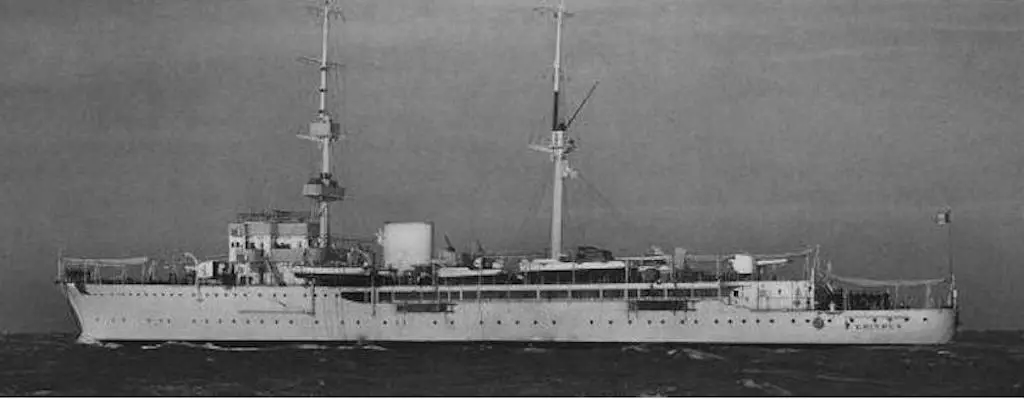
Italian Sloop Eritrea
Eritrea, Ramb I and Ramb II
The move was the result of a well-founded fear that the Africa Orientale Italiana (Italian East African Empire) would soon fall. Thus provide the British an opportunity to capture the Italian vessels. In February 1941, just two months before the fall of Massawa, the colonial sloop Eritrea (armed with four 120mm guns, two 40mm and two 13.2 mm machine guns) and armed ships Ramb I and Ramb II left for Kobe, Japan or, as an alternate, Shanghai or Tientsin.
The two Ramb ships, built as banana ships, were modern and fast and had been transformed into auxiliary cruisers with the installation of four 120 mm guns and some 13.2 mm anti-aircraft machine guns. While Eritrea and the Ramb II reached their destination eluding British patrols, the British cruiser Leander sank Ramb I near the Maldives Islands in the Indian Ocean.

The Ramb 1 sinks after being hit by HMNZS Leander on 27 November 1940.
Merchant Raiders
Despite the partial failure of the relocation mission, the Italian diplomats and military attachés in Tokyo discussed with the Japanese authorities the possibility of utilizing the Ramb II as a pirate ship (like the German Kormoran).
The utilization of this modern and efficient vessel, which would have received some necessary alterations from the Kobe shipyard, was to interdict British traffic in the Indian Ocean. The Ramb II was in the port of Massawa to receive several antiaircraft machine guns and a larger naval gun, such as a 120 mm or a 152 mm. Nevertheless, because of the strong opposition presented by the Japanese Navy, both the Ramb II and Eritrea remained at their docks.
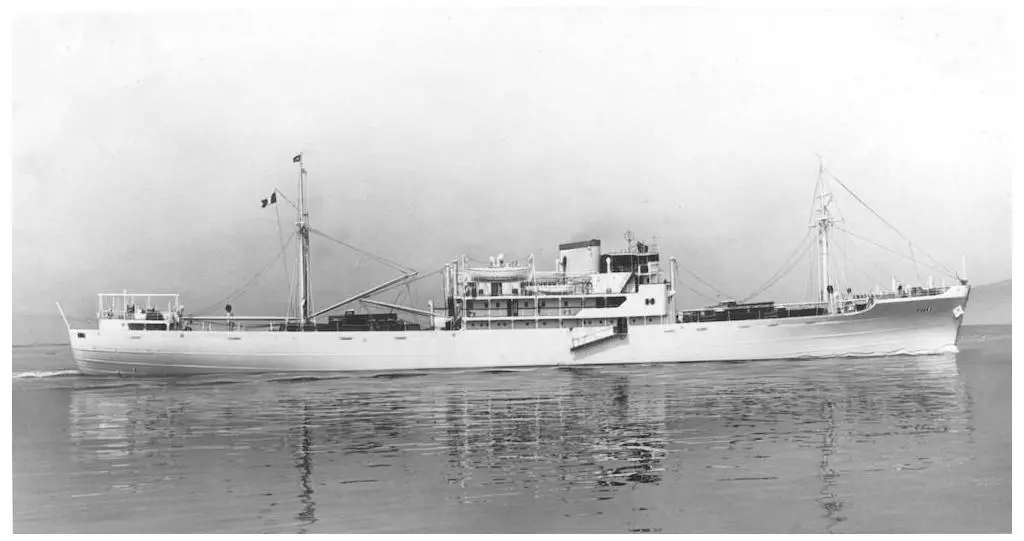
The Ramb II
Japan, at least until December 7th, 1941, the day of the sudden attack against Pearl Harbor, always wanted to avoid any confrontation with the United States and Great Britain.
Only after the official declaration of war did the Japanese government allow the ship Eritrea to provide assistance to the oceanic submarines, which were arriving in Penang and Singapore from the very distant base in Bordeaux carrying rare goods (2).
Some Italian Merchant Marine ships, like the Conte Verde in Japanese or Chinese waters at the time of the declaration of war, were not utilized by the Japanese, while others attempted to reach Bordeaux. The base (known as Betasom) was used by 27 Italian submarines operating in the Atlantic and the Indian Oceans from September 1940 through September 1943 against the Allied blockade. Some of these merchant ships succeeded in the very difficult endeavor of transporting to Europe a discrete quantity of rare goods, such as rubber, tin, and quinine, while others had to seek refuge in neutral ports. The Italian Navy, similarly to the Germans, attempted to utilize submarines to exchange goods with Japan despite the high losses and small advantages.
Fate of the Vessels Following the Armistice
On September 8th, 1943 at 2:00 AM (local time), the ship Eritrea was sailing from Singapore to Sabang in support of the submarine Cappellini, which just arrived after a long and difficult journey to transport strategically important material to Tokyo. The Eritrea changed course for Colombo (Ceylon) through the strait of Sumatra to avoid an immediate and tenacious hunt by Japanese naval and aerial forces following receipt of a Reuter communique of the Italian surrender (3).
You May Also Like:
MAS and CB Midget Submarines in the Black Sea.
Explosive Motorboats.
The other units deployed in the sector were:
Submarine Giuliani, Capitano di Corvetta (CC) Mario Tei, and submarine Luigi Torelli, T.V. Enrico Gropalli (4a) were in Singapore already loaded and ready to set sail for Bordeaux. Submarine Cappellini, CC Walter Auconi, found themselves in Sabang ready to return to Europe. Submarine Cagni, C.C. Giuseppe Roselli-Lorenzini, coming from Bordeaux and in transit in the Indian Ocean bound for Singapore (4b).
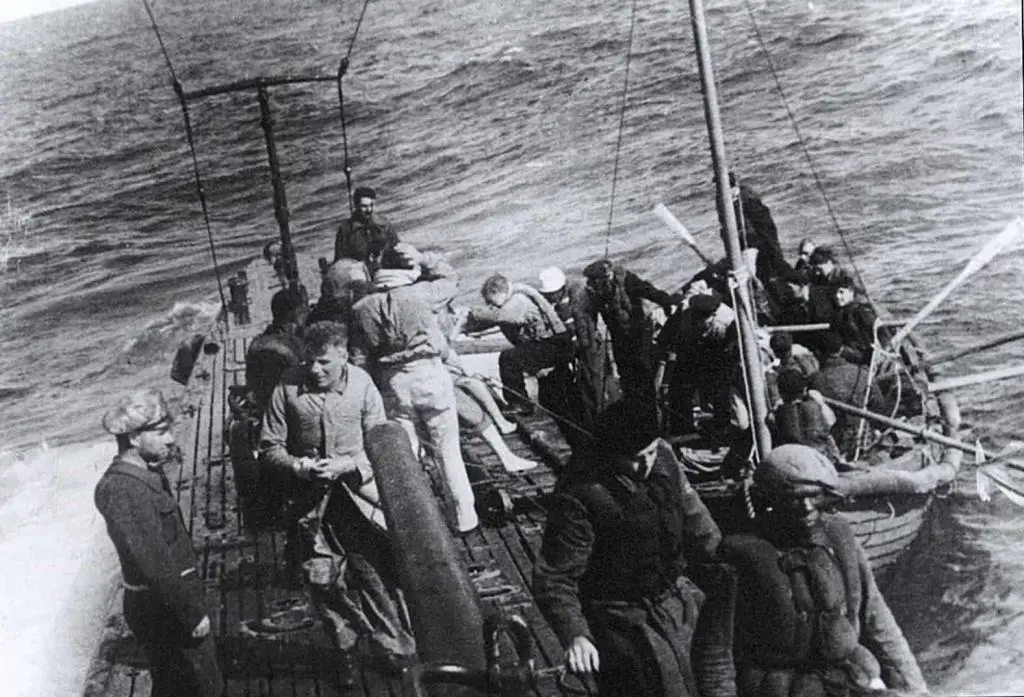
Crew of the submarine Comandante Cappellini.
Gunboat Lepanto, C.C. Morante, and gunboat Carlotto, T.V. De Leonardis, were both in Shanghai, while the auxiliary cruiser Calitea II and Ramb II, CC C. Mazzella, were in Kobe for repair work. These last two units were scuttled on the 9th to not fall into Japanese hands. The submarine Cappellini chose to fight alongside the German and Japanese as part of the newly created “Repubblica Sociale Italiana”. However, the Japanese seized the Cappellini after its escort to Singapore. Despite a pledge of allegiance from Commanding Officer Auconi, Admiral Hiroaka interned the ship and captured the crew. The Giuliani and the Torelli followed the same fate. Even though the crew, with the exception of the officers, wanted to keep fighting along with the old allies. The only unit saved was the Cagni, which was aware of the armistice and reached Durban in South Africa before surrendering.
Despite the awful Japanese behavior, many Italian submariners in the Indian Ocean kept fighting for several months. The Italian boats transferred to the German U-Boat command in Penang and continued operating with a mixed Italian-German crew. After the German surrender on 8 May 1945, about 20 sailors kept fighting along the Japanese (5). For the record, the Torelli operated in Japanese waters until 30 August 1945 and shot down an American B-25 Mitchell. It was the last success of a “Japanese” naval vessel in War World Two.
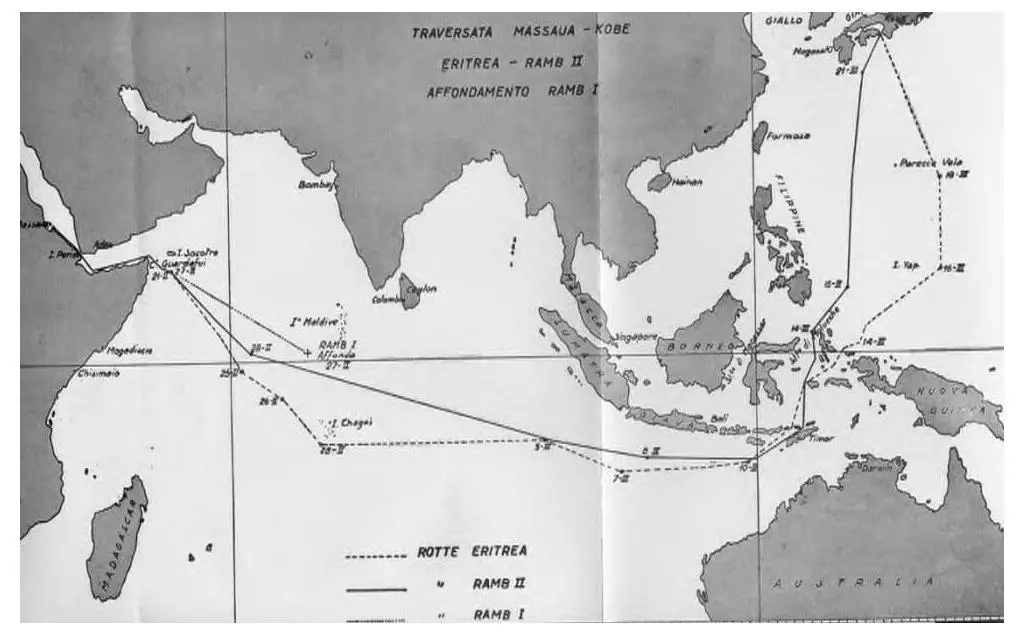
Route map of Italian vessels Eritrea, Ramb I, and Ramb II.
Notes
1: Built in 1927, the minelayer Lepanto was converted to a gunboat. It had a displacement of 1,040 tons, a speed of 15 knots and armed with two 120 mm guns, (2 ) 40mm machine guns and 80 depth charges. The gunboat Ermanno Carlotto was built in 1923. It had a displacement of 318 tons, a speed of 13.5 knots and armed with two 76 mm guns and 4 machine guns.

Gunboat Lepanto
2: The first German ship able to break through the Allied blockade was the Weserland (6,500 tons), under commander Krage who on December 28th, 1940 sailed from Kobe with a load of rubber, Wolfram, felt, vegetable oil, tea, coffee and pharmaceutical products. The Weserland crossed the Pacific, Cape Horn, the Atlantic and arrived in Bordeaux on April 4th, 1941 after 98 days at sea. At the outbreak of war, 14 German and 2 Italian ships remained locked in the Japanese ports of Yokohama, Osaka, and Sasebo and in the Manchurian port of Dairen.
3: Between 1942 and 1943 the shipyard Tosi designed and built two large transport submarines, the Romolo and the Remo, originally developed to reach the Far East. These two submarines (from 2,210 to 2,606 tons) were able to transport 610 tons of goods with a range of 12,000 km. The Romolo and Remo comprised of two of 12 planned units and perished on their first cruise. One sunk by airplanes and the second by an enemy submarine.
4: During the second half of May 1943, just after the end of some structural work, the first Italian transport submarine left Bordeaux followed by a few others. The fate of these vessels was a sad one; Two, the Tazzoli and the Barbarigo, disappeared at sea after their departure, probably sunk by Allied planes. On 08 September 1943, German forces captured the Giuliani and the Torelli in Penang, Malaya. The apparent disaster which had stricken the Italian forces did not impede the Japanese from capturing 355 tons of war material in Penang coming from Germany, equivalent to 55% of the total load of the 6 Italian vessels. On the other hand, the Germans never received the 377 tons of rubber and the 184 tons of Felt already loaded on the Italian submarines. As a matter of fact, the Germans did not want to sail these worn down vessels back to Bordeaux.
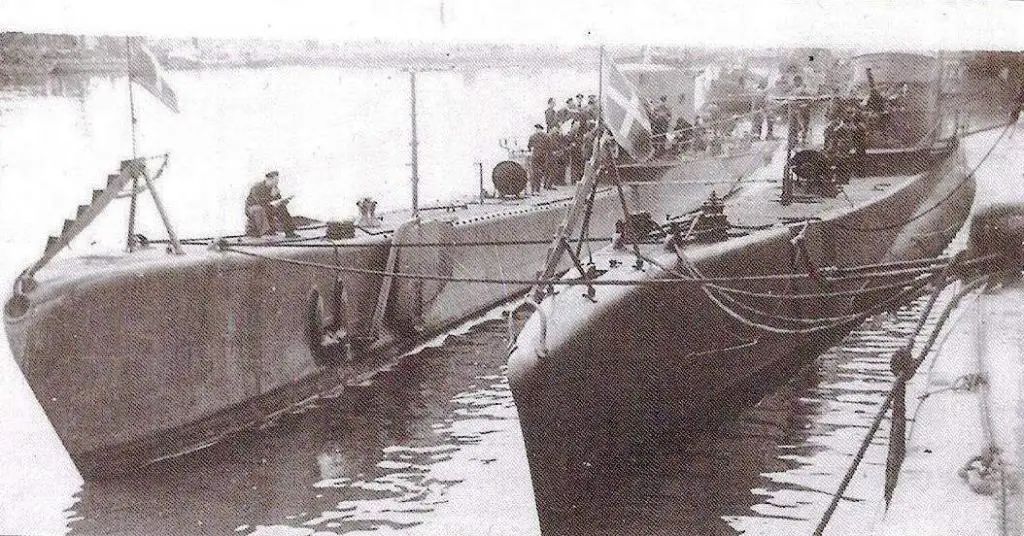
The Comandante Cappelini and Alpini Bagnolini in Bordeaux, France, 1941.
4a – 4b: Italian submarines based at Betasom which underwent transformations were actually seven.: Comandante Cappellini, Tazzoli, Finzi, Giuliani, Alpino Attilio Bagnolini, Barbarigo, and Torelli. The Tazzoli and the Barbarigo sank. The Germans captured the Cappellini, which arrived in Penang on September 10th, 1943, and renamed U.IT.24. It transferred to the Japanese after 08 May 1945 and renamed it I.503. The Germans capture the Giuliani, which had arrived in Singapore in late summer 1943, and renamed U.IT.23. This vessel with a mixed crew of Italian and Germans crew sank in the Malacca Strait in 1944 by British submarine Tallyho. The German navy took possession of the Finzi, which in September 1943 was still in Bordeaux waiting for the completion of some repair work, and renamed it U.IT.21. The vessel was never utilized as a transport and the Germans. The Germans eventually scuttled it in Bordeaux on August 25th, 1944 before the arrival of Allied forces.